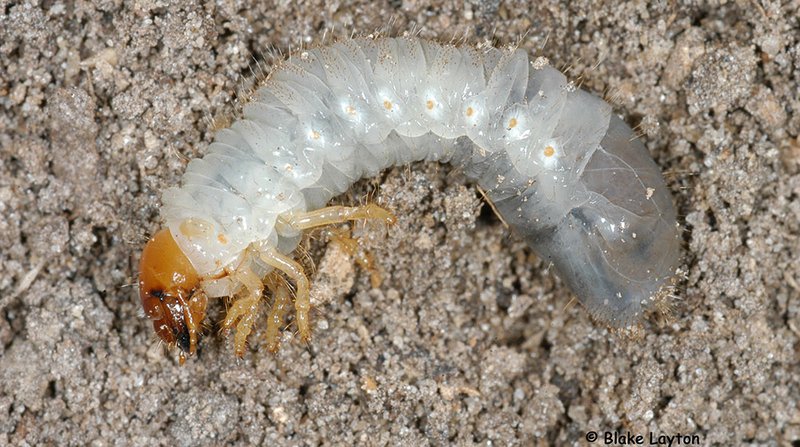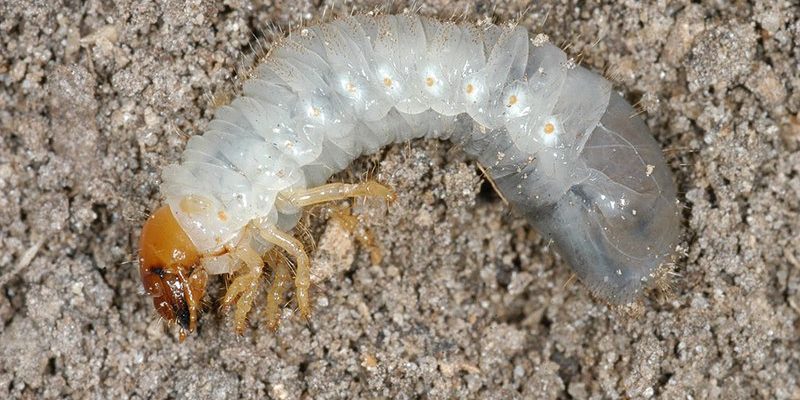
White grubs are often the larvae of beetles and can range in size and behavior. Some are harmless, while others can wreak havoc on your plants. Knowing the differences can make managing them less of a headache. Let’s dive deeper and explore the world of these grubs, why some are more concerning than others, and how to identify them.
What Are White Grubs?
Before we can dive into whether all white grubs belong to the same species, it helps to understand what they actually are. White grubs are the larvae of various species of beetles, including the notorious Japanese beetle, June beetle, and others. They usually have a C-shaped body, a soft texture, and are generally white to cream in color. Their size can vary, with some being just a few millimeters long, while others can grow up to an inch or more.
These larvae inhabit the soil and feed on roots and organic matter. Picture them as little munching machines, working their way through your garden. Most gardeners first notice them due to the damage they cause—yellowing grass or wilting plants might signal that grubs are at work below the surface.
You might be wondering how to differentiate between the species. While they all share a similar look, their behavior, size, and the damage they cause can vary greatly. Let’s dig a little deeper!
Common Species of White Grubs
There are several species of white grubs, and each has its own story. Here are the most common ones you might encounter:
- Japanese Beetle Grubs: These grubs are typically found in lawns and feed on roots. They can cause significant damage, especially during their peak feeding time in late summer.
- June Beetle Grubs: These grubs are larger and can often be found deeper in the soil. While they feed on roots, they usually do less damage compared to Japanese beetle grubs.
- Masked Chafers: Unlike their Japanese counterparts, masked chafer grubs tend to stay near the soil’s surface. They can cause patches of brown grass when they feast on roots.
Each species has distinct habits and life cycles, so understanding which grubs you’re dealing with can help you manage them better. If you find yourself facing a grub problem, knowing their species can be a game-changer.
How to Identify Different Grub Species
Identifying white grubs isn’t as tough as it sounds. Here’s a simple breakdown to guide you:
1. **Look at the Size and Shape**: Most white grubs are C-shaped, but sizes can vary significantly. Japanese beetle grubs, for instance, are smaller and more rounded than June beetle grubs, which tend to be larger and more elongated.
2. **Mouth Parts and Color**: The mouthparts can offer clues. Japanese beetles have a distinctive rounded shape, while June beetles have more pronounced heads. Also, while most grubs are white, slight variations in coloration can help with identification.
3. **Movement Patterns**: Pay attention to how the grubs move. Japanese beetle grubs often wiggle vigorously when disturbed, while June beetle grubs might stay still and curl up.
Here’s the thing: every little detail can help in distinguishing these grubs. If you’re not sure, collecting a few samples and researching images online can be a good way to narrow it down.
The Impact of Different White Grubs on Gardens and Lawns
Understanding if all white grubs are the same species goes beyond just identification; it dives into how they impact your garden. Different species can have varying levels of damage.
For example, **Japanese beetle grubs** can decimate the roots of your prized plants, leading to brown patches in your lawn. On the other hand, **June beetle grubs** typically cause less severe damage, as they often don’t invade the root systems as aggressively. Meanwhile, **masked chafers** might create smaller dead patches, appearing more like a nuisance than a full-blown problem.
You might think about how this impacts your repair strategy. Knowing the grub’s species can help you decide whether to take immediate action or just monitor the situation. Sometimes, less aggressive species require less drastic measures, allowing you to save time, effort, and resources.
Control Methods for White Grubs
If you find your garden overrun with white grubs, don’t panic! There are various ways to control them, depending on the species you’re dealing with. Here are a few effective methods:
1. **Natural Predators**: Introducing beneficial nematodes can greatly help in managing grub populations. These tiny worms invade and kill grubs without harming your plants.
2. **Milky Spore**: This natural bacteria targets Japanese beetle grubs specifically. When applied to the soil, it can provide long-term control since it multiplies in their populations.
3. **Chemical Treatments**: If the infestation is severe, synthetic pesticides like imidacloprid can be effective. However, it’s vital to follow guidelines carefully to minimize harm to beneficial insects.
Monitoring the population regularly is also crucial. If you notice just a few grubs, it might be best to let nature handle it. But if you see them in abundance, it’s time to take action.
When Is the Right Time to Act?
Timing matters when dealing with white grubs. If your lawn shows signs of damage, early intervention is key. Most grubs are active during the summer months, especially from late July through early September. This is when you should be most vigilant.
That’s when young grubs are hatching, feasting on roots, and causing the most damage. If you can catch them early, your chances of managing their population effectively are significantly higher.
You also want to consider the weather. A wet season can encourage grub activity, making it more important to keep an eye on your lawn. If you start seeing signs of stress on your grass or plants, it’s time to roll up your sleeves and investigate.
Final Thoughts on White Grubs
When it comes to white grubs, the answer to whether they’re all the same species is a clear “not quite.” While they might look similar, the differences can significantly impact your garden. Understanding these little creatures can lead you to better management practices and healthier plants.
So the next time you spot a white grub, take a moment to observe. You might just discover a whole world of creatures operating under your feet, each with its own unique role to play in your garden ecosystem. By learning to identify and manage different species, you’ll be well on your way to keeping your garden thriving. Happy gardening!

